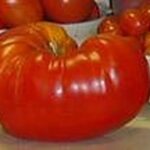Epazote, Cenapodium ambrosiodes, is a drought tolerant herb that can be grown at home, which can save money. Epazote does very well in a good size pot that is placed in full sunlight. The soil in this pot does not matter as much as the drainage. In fact a soil that is not rich generally produces Epazote leaves with the most flavor. The main factors to growing Epazote at home is to remember to place it in full sunlight and to make sure there is plenty of drainage. If these two factors are correct in the pot, then add a few Epazote seeds to the pot and after these seeds emerge from the soil, thin the seedlings so that the pot is not as crowded and the Epazote plants can grow. Do not fertilize herbs as fertilizing them weakens the flavor they provide.
Epazote is one of the drought tolerant herbs that is actually an annual, but in some circumstances it will act as a perennial, especially if it is grown indoors in a good size pot. This herb is one that can grow three to five feet tall, has stems that are multi-branched and reddish in color, has leaves that are serrated and have an odor similar to camphor and the flowers on this herb are yellow and appear in clusters. This herb can be an invasive species if it is allowed to flower and go to seed. The seeds spread easily and the plant grows easily, giving it the invasive reputation.
To use homegrown Epazote when cooking, it is important to know how to harvest it first. The center stem of the plant should be cut first, this will encourage the plant to become a bush, producing more Epazote leaves. Stems with leaves are the part of the plant that is to be harvest, but the leaves are used when cooking. Do not harvest more than half of a plant at a time. Freshly harvested stems can be stored in a glass of water, similar to fresh cut flowers.
When would a person use Epazote? An Epazote leaf or two can be used when cooking beans, cooking salsa, broiling fish, in soups or even in quesadillas. It is predominantly used in Mexican cuisine and is thought to “cut down on the natural byproducts that beans produce after consumption.” There are different thoughts concerning using Epazote to season foods as some people say it does add a flavor to the food and other people say it does not.






